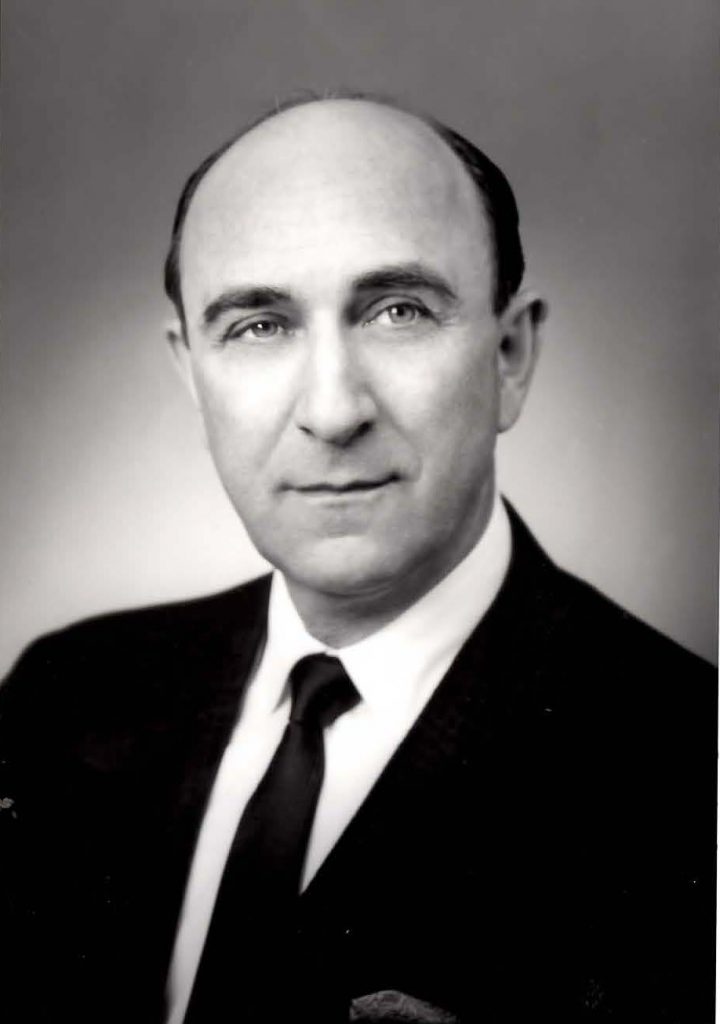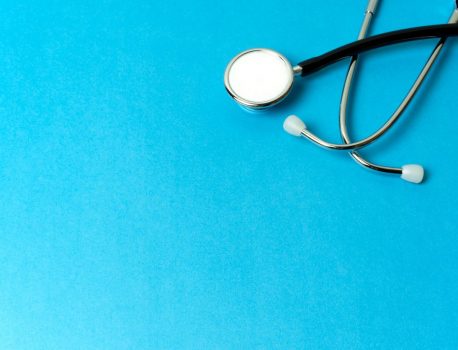
Dr. Morris A. Shapiro MD was one of the few cardiologists practicing in Schenectady in the 1950s. He practiced medicine from 1937 until his retirement in 1986. He graduated from Union College and went onto Albany Medical College for his medical degree, just as his brother, Isaac, had done before him. He loved Union College and enjoyed going to football games throughout his life. Also, he maintained close friendships with his Phi Sig “brothers” from Union College.
Just prior to him starting his practice as a physician in Schenectady, he volunteered to go into the Army right after World War II broke out. Before going into the Army he met his wife, Hester, who gave birth to their first child, Susan, while he was overseas. He served in the Army Medical Corps for 5 years. Three of those years he spent overseas with the First Infantry Division. He participated in the invasions of North Africa and Sicily. He received 2 Silver Stars for gallantry in action, the Presidential Citation Medal, the Purple Heart, and 4 Campaign Bronze Battle Stars. He attained the rank of Major in the Army Medical Corps
Following his World War II service, he came back to Schenectady, where he practiced medicine initially during a time when there were very few who specialized in cardiology. In 1946, William was born to Hester and Morris and Dr. Shapiro made house calls as well as seeing his patients in the hospital and his office.
Before specializing, he practiced as a general practioner in Schenectady and then went on for further training in cardiology. Years later he became the president of the State Chapter of Chest Physicians. For 3 years he was the governor of the American College of Cardiology for upper New York State. He was a diplomate of the American Board of Internal Medicine and was a Fellow of the American College of Physicians and the American College of Cardiology.
In addition to his involvement with organizations, he was also an instructor at Albany Medical College For most of his years as a practicing physician, he worked alone, but along the way provided space for Dr. Miguel Cabral to practice in the evenings after Dr. Shapiro left his office for the day. He purchased his office — a two story home at 1603 Union Street where he practiced cardiology for his whole career. The advantage of being across the street from Gershon’s deli on Union Street was that he was easily able to get a sandwich before starting his long office hours in the afternoon.
His son recalls that in the 50s and 60s Dr. Shapiro sterilized the needles for injections the old fashioned way probably with boiling in a metal tray. In the hall of his office was a large cabinet where he kept medicines for his patients. He used these small boxes that he labeled, filled with pills, and gave to his patients during their appointments. His son also recalls Dr. Shapiro often prescribing digitalis for his patients.
The medical machines in his office were limited to an EKG machine, a fluoroscope, and a metal blood pressure stand with connected arm band, among other devices. As for the special cardiac needs of his patients, Dr. Shapiro used one particular physician in town for all of their pacemaker needs.
Dr. Shapiro’s daily schedule was to first make hospital calls in the morning, followed by office appointments in the afternoon. He often kept a Coca—Cola as an energy boost in a small room where he kept other items. He was assisted in the office by Anna May and Ruth who made appointments and did billing. He practiced cardiology in the same office with his brother, Isaac, who practiced psychiatry.

He was respected by his colleagues and received many honors during his years of practicing at both Ellis and St. Clares Hospitals. He consulted at Cobleskill, and Sunnyview hospitals as well as at the Daughters of Sarah Nursing Home. Often, he would bring EKG slips home with him to read, and then sent in the results the next day. In 1966 he directed the establishment at St. Clares Hospital of the 1st coronary care unit in this part of NYS. He had been president of the medical staffs at both Ellis and St. Clares Hospitals and served as the president of the County Medical Society.
He was devoted to his patients wanting them to feel positive about their future following their heart ailments. He realized that patients experienced heightened anxiety following their heart attacks. His philosophy of medical treatment was to treat the whole person, not just their heart problems. He found the study of the heart and circulatory system particularly engaging. He loved medicine, and continued to study and learn throughout his years of practicing medicine and beyond even in retirement.
In conversation with friends, he was told about a place in Palm Beach Florida to stay during the winter months. Initially he and his wife, Hester, went for a few weeks and eventially went for longer periods of time. He relied on a couple of physicans, who covered his patients while he was away. When he finally did retire in 1985 he referred all his patients to Dr. Paul Dworkin.
He died at age 90, and retained an interest in medicine even in retirement. An important reason for his success inmedicine was his love of people, as he easily established positive relationships with his patients and all who knew him. He had an engaging smile and communicated a sincere interest in others. His advice to people could be summed up in a few words he used frequently, “keep punchin’ kid.”
Written with love and respect by William Shapiro, son of Dr. Morris Shapiro

